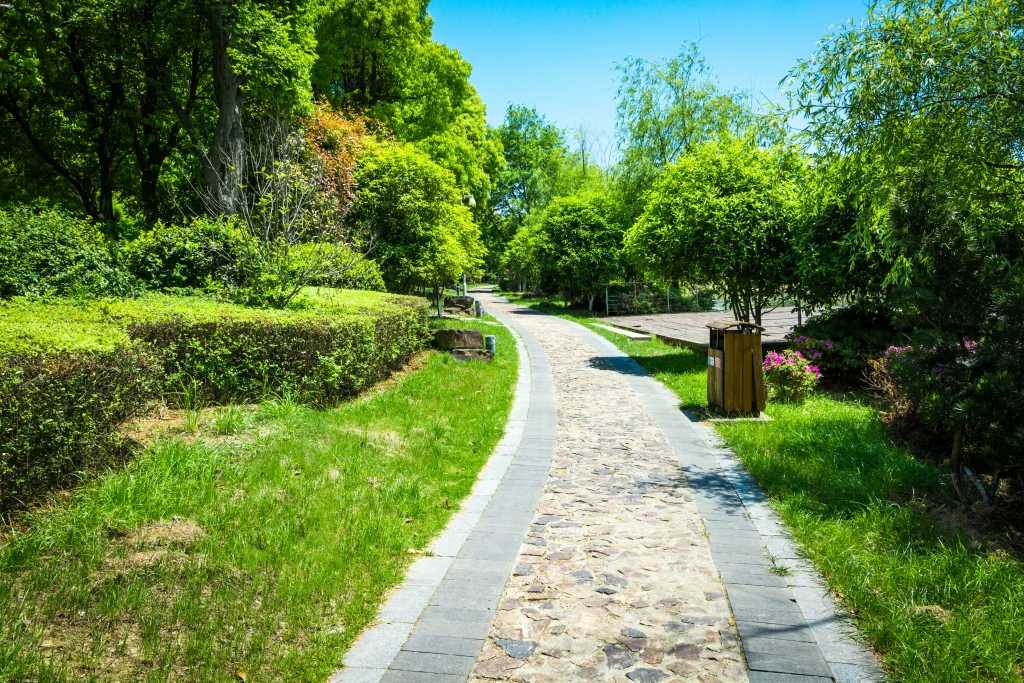Retaining walls transform challenging slopes into usable space while preventing soil erosion and property damage. These structural elements serve as both functional necessities and design opportunities for homeowners facing multi-level yards or sloping terrain. Beyond their practical purpose, retaining walls create visual interest, establish distinct outdoor zones, and enhance property value.
This comprehensive collection of retaining wall ideas features budget-conscious solutions, modern architectural statements, rustic natural installations, and DIY-friendly projects to inspire your next landscape enhancement. Whether you need a small garden border or a substantial hillside reinforcement, these ideas deliver both stability and style for your outdoor environment.
Budget-Friendly & DIY Retaining Wall Ideas
Cheap Retaining Wall Ideas
Use reclaimed materials for walls under three feet: wooden pallets, salvaged bricks, or recycled concrete work well on gentle slopes. Check garden centers for end-of-season block clearance sales. Always include proper drainage—gravel backfill and drainage pipe—despite budget constraints to prevent costly failures.
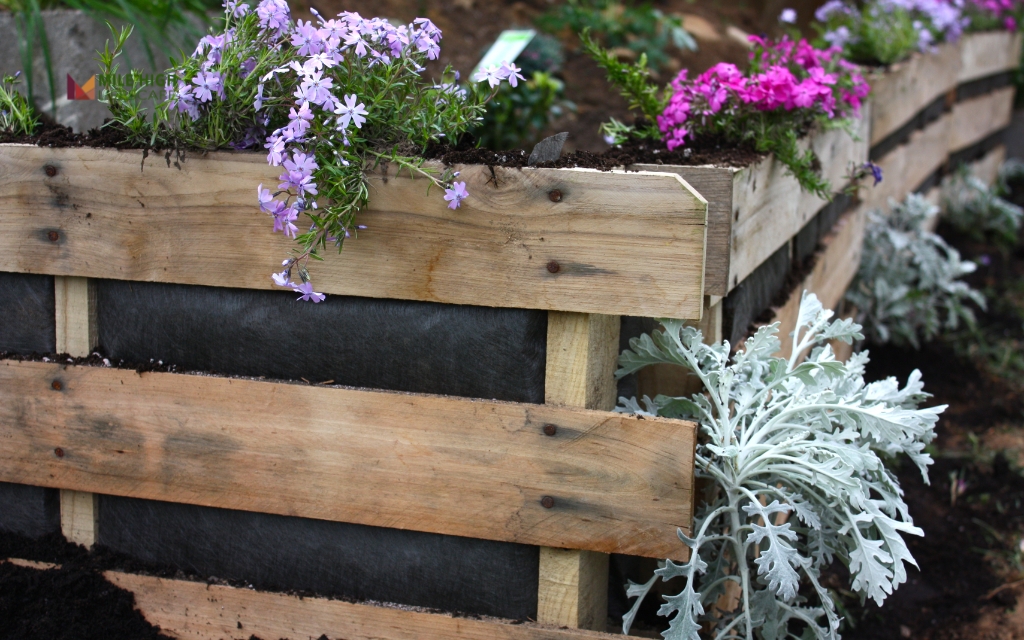
Affordable Retaining Wall Ideas
Choose modular block systems for cost-effective professional results. These interlocking units require minimal specialized tools. Source stone locally to reduce transportation costs. Consider “seconds” with minor imperfections for 30-50% savings. Wall kits with pre-cut components reduce labor time for DIYers avoiding contractor fees.
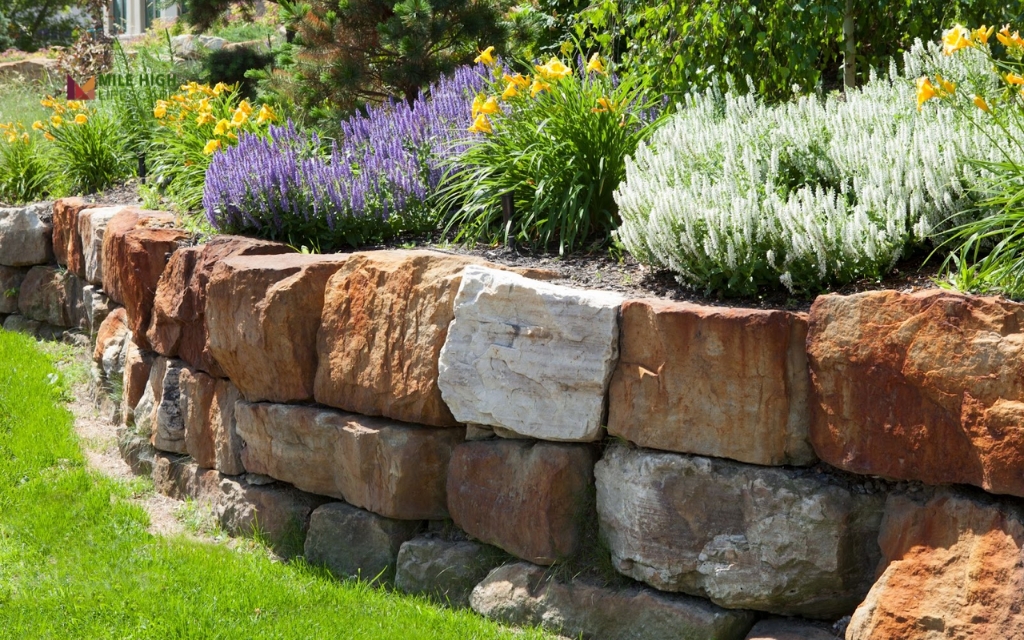
Cinder Block Retaining Wall Ideas
Cinder blocks deliver structural integrity on a budget. These hollow blocks stack precisely for stable wall construction. Improve appearance with stucco in earth tones or vibrant colors. Fill cores with rebar and concrete for strength or soil for plant pockets. Include drainage holes near the base with gravel backfill to prevent water pressure buildup.
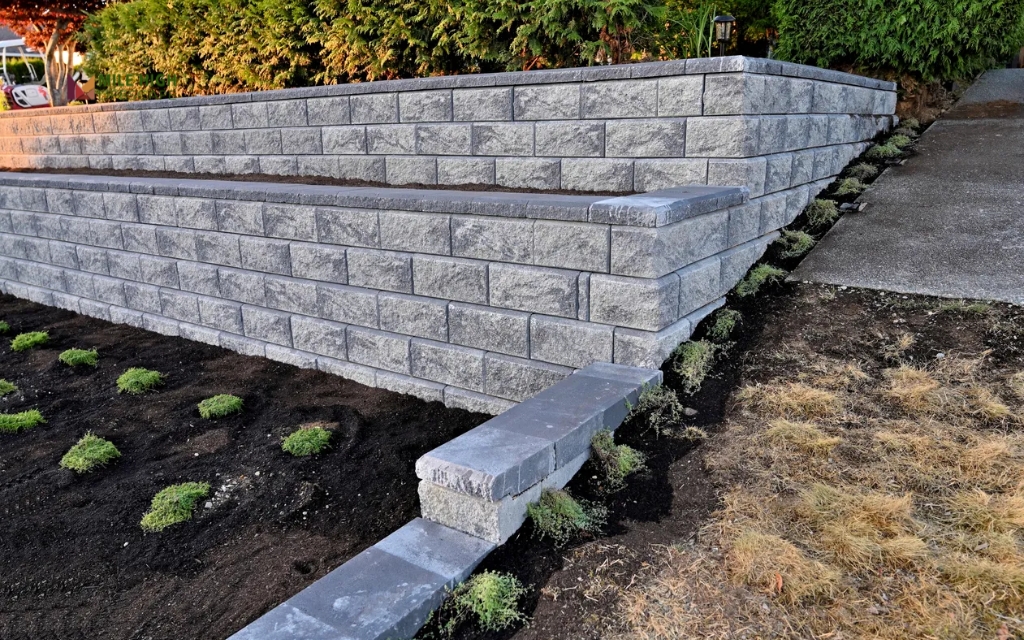
Wood Retaining Wall Ideas
Pressure-treated timber and railroad ties create natural-looking walls accessible to DIYers. Stagger joints between layers and anchor with rebar driven into the ground. For wet climates, invest in marine-grade lumber. Use cedar or redwood for garden walls, as their natural oils resist insects and decay without harmful chemicals.
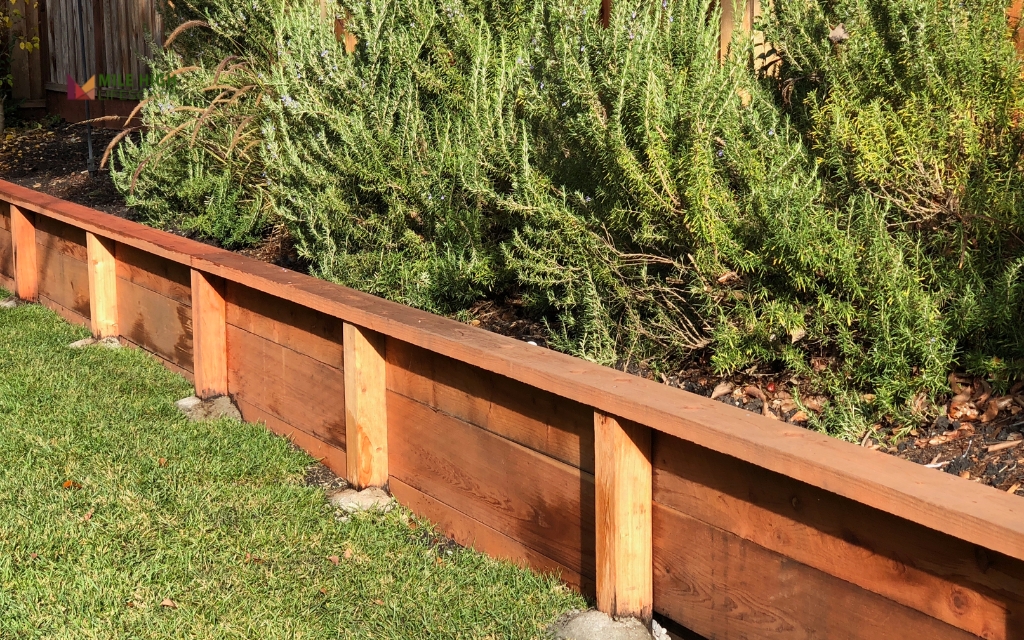
Pallet Wood Retaining Walls
Transform shipping pallets into garden borders under 24 inches tall. Select heat-treated pallets for garden use. Reinforce with cross-bracing and landscape posts anchored into stable ground. Apply exterior-grade sealant for extended durability. These structures suit cottage gardens and rustic landscapes where informal character enhances the setting.

Concrete Bag Retaining Walls
Stack unopened concrete mix bags in a staggered pattern, wet thoroughly, and let harden in place. The paper wrapping deteriorates, leaving textured concrete without mixing or forming. Step back each layer slightly for stability. This method works for walls under three feet, garden borders, and quick erosion control. Add color pigment before wetting or apply masonry stain after curing.
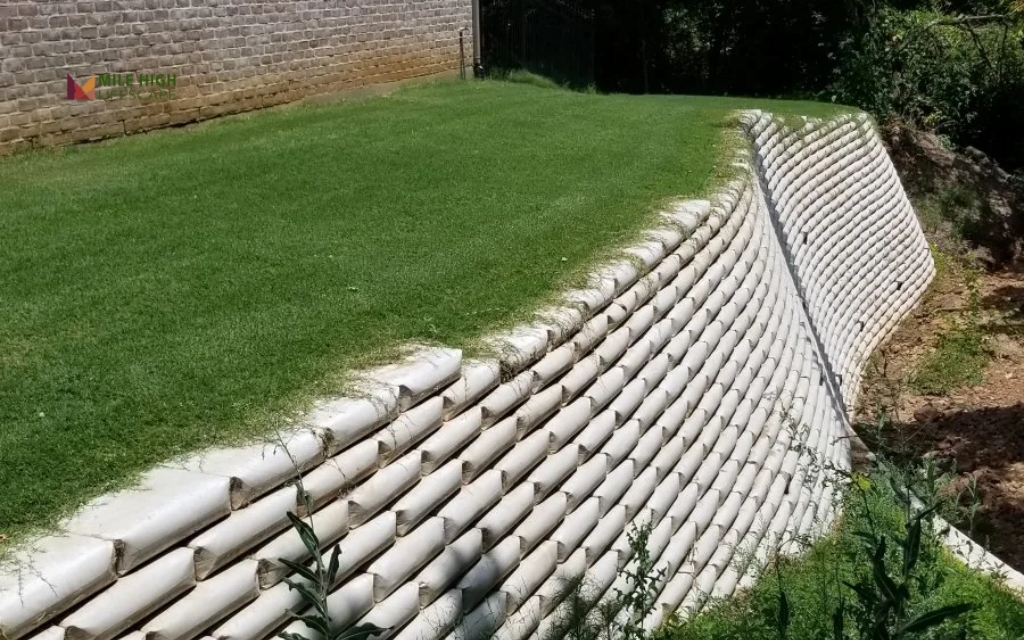
DIY Gabion Wall Ideas
Fill wire mesh cages with stone for modern, industrial-style walls with excellent drainage. Experiment with materials—river rock, recycled glass, brick fragments, or contrasting stone layers. These walls flex slightly with ground movement, making them resilient in freeze-thaw regions. Choose rectangular cages for contemporary landscapes or rounded forms for rural settings.
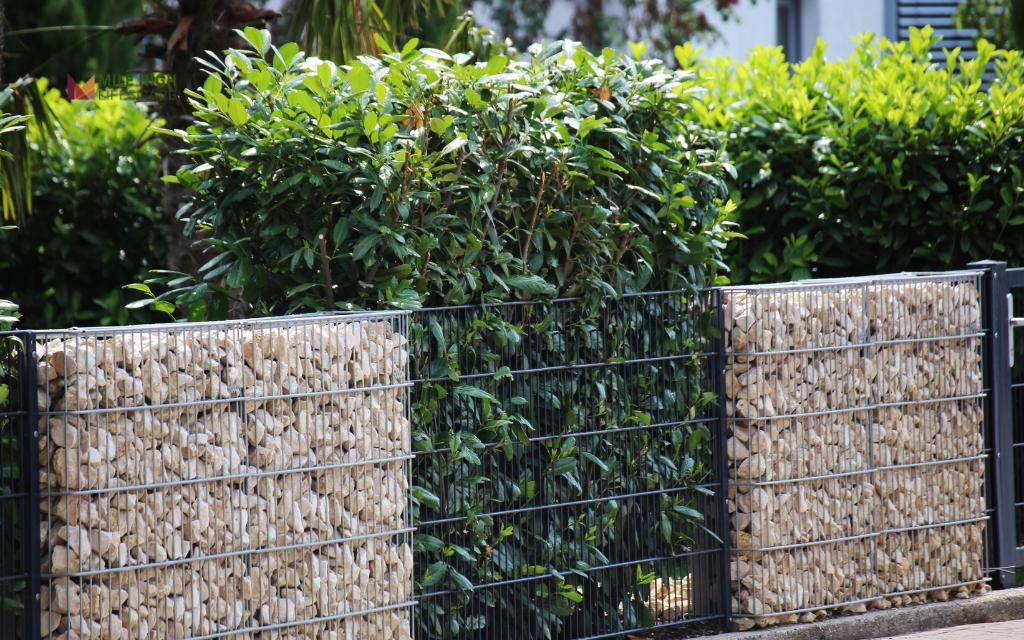
Low Retaining Wall Ideas
Build walls under 18 inches to define spaces without complex engineering. These structures create transitions between yard levels while typically avoiding permit requirements. Consider curved designs with stacked flagstone, concrete blocks, or brick. Cap with flat stones for casual seating around fire pits. Simple construction makes these perfect weekend projects for homeowners.
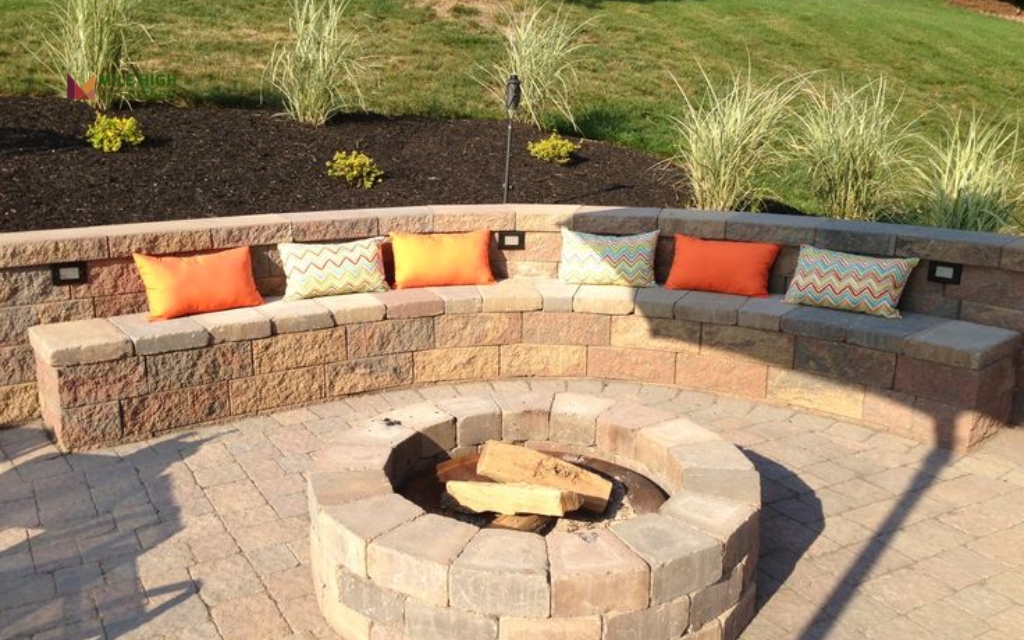
Natural & Rustic Retaining Wall Ideas
Natural Rock Retaining Wall Ideas
Use fieldstone and boulders from local landscapes to create walls that appear as natural extensions of the environment. This puzzle-like construction requires careful placement of varied shapes without mortar. The results improve with age as moss and lichens colonize the surface. Include larger anchor stones extending deep into the slope for stability. These walls suit mountain properties and woodland gardens where formal geometry would seem out of place.
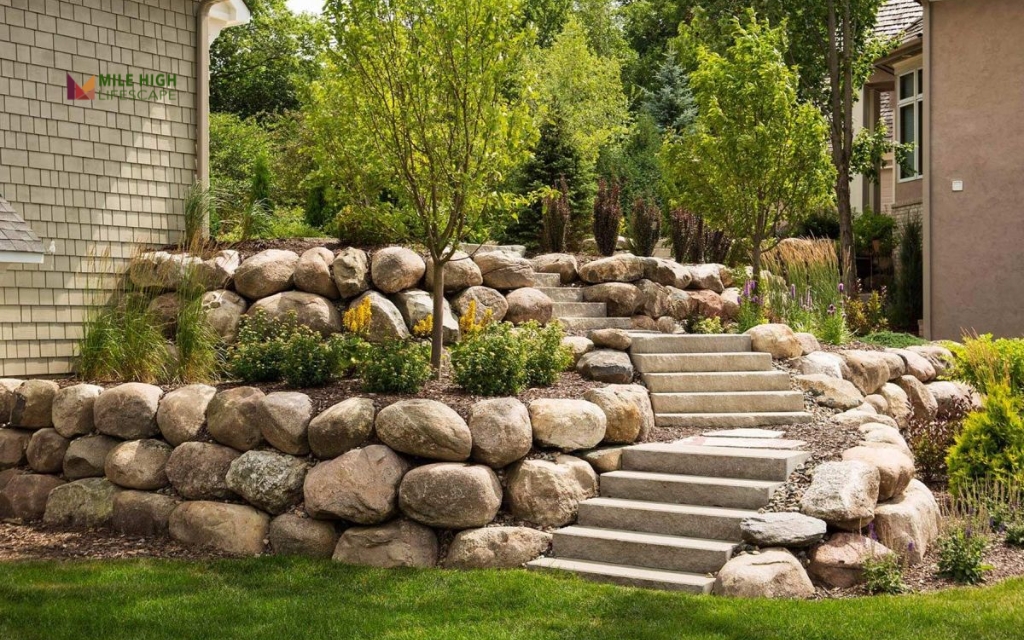
Rock Retaining Wall Ideas
Combine fieldstone with crushed stone for strength and natural drainage. Start with large base stones and progressively use smaller pieces to fill gaps. Create a drainage layer behind the visible face using crushed stone to channel water away from the wall base. For walls over three feet, incorporate geotextile reinforcement layers between stone courses for added stability while remaining invisible in the finished wall.
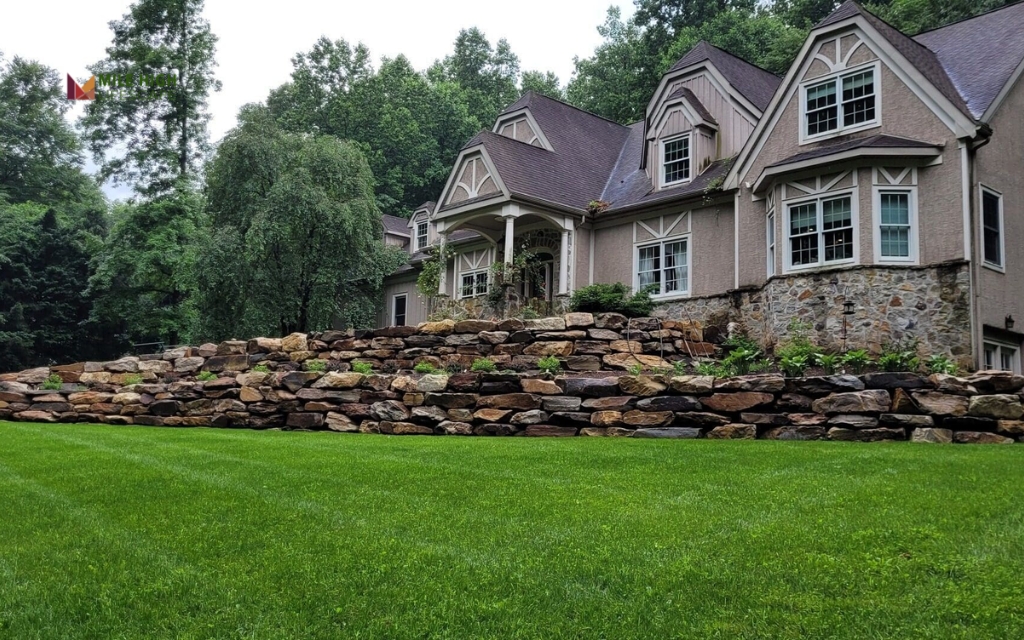
Boulder Retaining Wall Ideas
Create dramatic walls using massive boulders that offer primitive strength for challenging slopes. These substantial stones require professional equipment but provide unmatched permanence. Bury approximately one-third of each boulder below grade to secure against movement. Use spaces between boulders as planting pockets for alpine perennials and sedums. This approach works particularly well on steep grades where conventional walls would need extensive reinforcement.
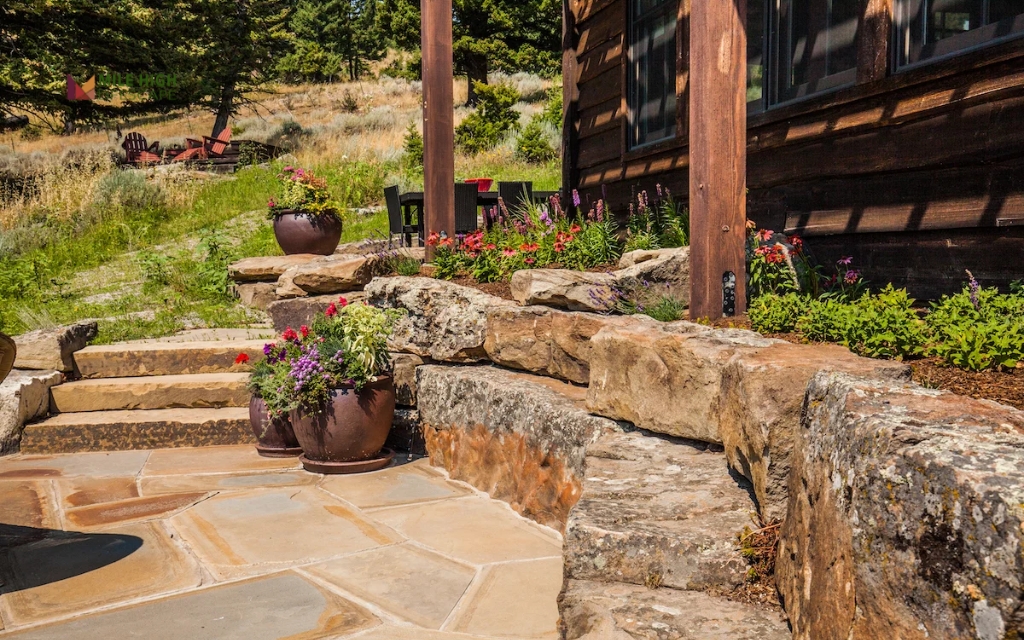
Natural Stone Retaining Wall Ideas
Use premium materials like flagstone, limestone, and slate to elevate retaining walls into architectural features. These stones combine rustic character with refined edges and consistent thickness. Choose between mortared construction for clean lines or dry-stack techniques for traditional character. The natural color variations create visual depth unavailable in manufactured products. These walls complement upscale homes and formal gardens where landscape elements reflect the quality of the main structure.
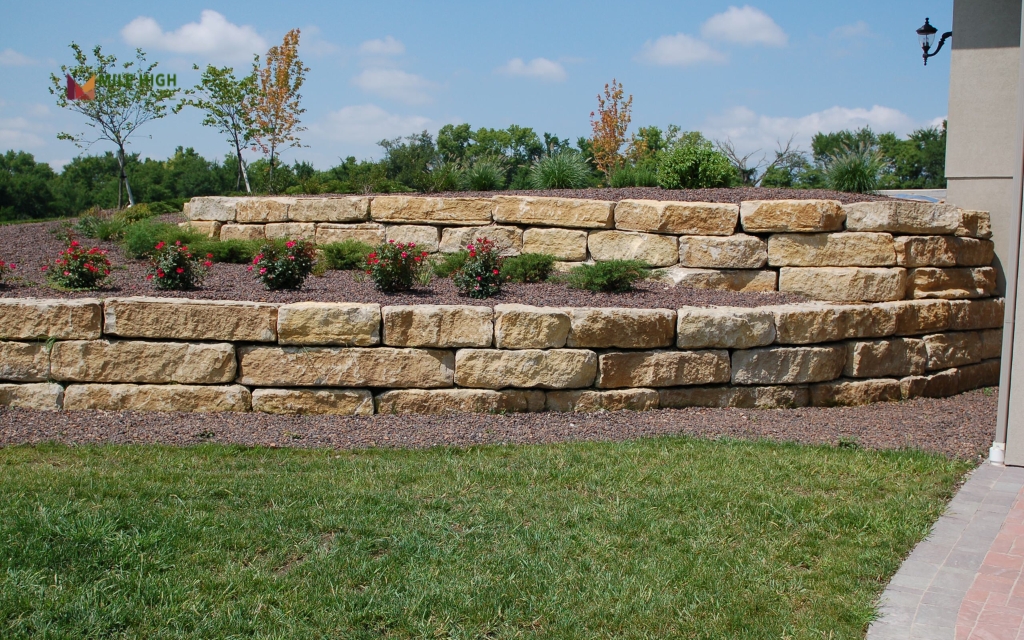
Dry Stack Stone Wall Ideas
Apply ancient building techniques in walls that use gravity and precision rather than mortar. This method creates distinctive character with excellent drainage through natural gaps between stones. Position each stone to lock securely with those below. Incorporate a slight inward lean of approximately one inch per vertical foot for stability. These walls flex slightly during freeze-thaw cycles without cracking and provide habitat for rock-loving plants like sempervivum and creeping thyme.
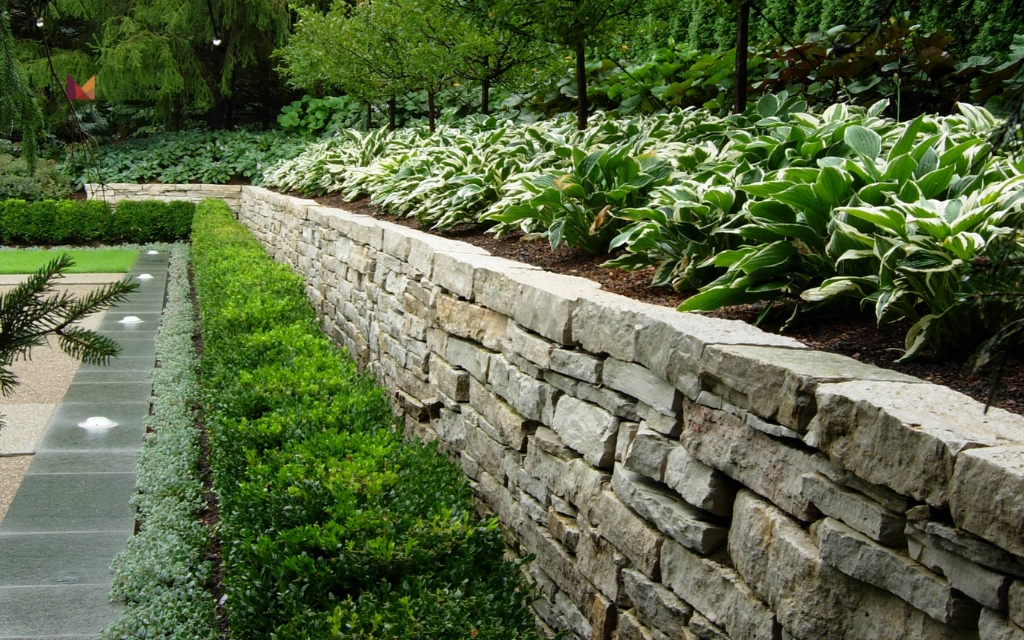
Timber & Stone Combination Walls
Combine the structural grid of timber with the texture of stone or river rock. Use pressure-treated posts anchored in concrete for vertical support with horizontal timbers creating pockets filled with stone. This approach reduces stone quantity while maintaining aesthetic appeal. The combination works well for large properties where extensive walls benefit from wood’s cost efficiency and stone’s permanence. Incorporate built-in steps, planters, and seating areas within this framework.
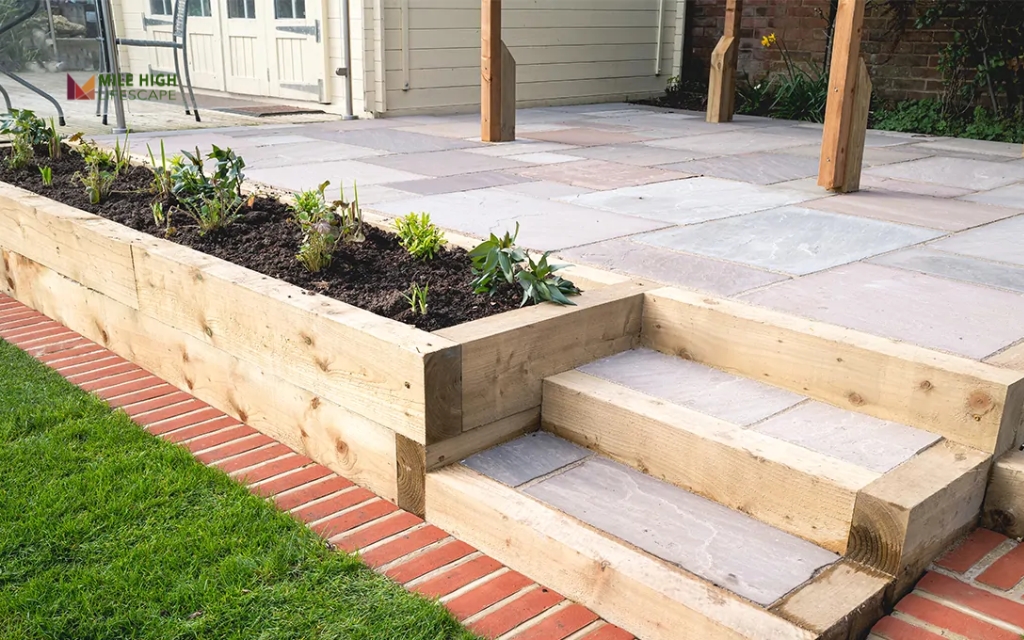
Terraced Retaining Wall Ideas
Create usable space on steep slopes using multiple walls forming level terraces. This approach distributes soil pressure across several smaller structures rather than one tall wall. The flat areas between walls offer opportunities for distinct garden rooms with unique planting schemes. Vary materials between levels for visual interest. Maintain horizontal spaces between walls at least twice the height of the wall below for proper soil support and maintenance access.
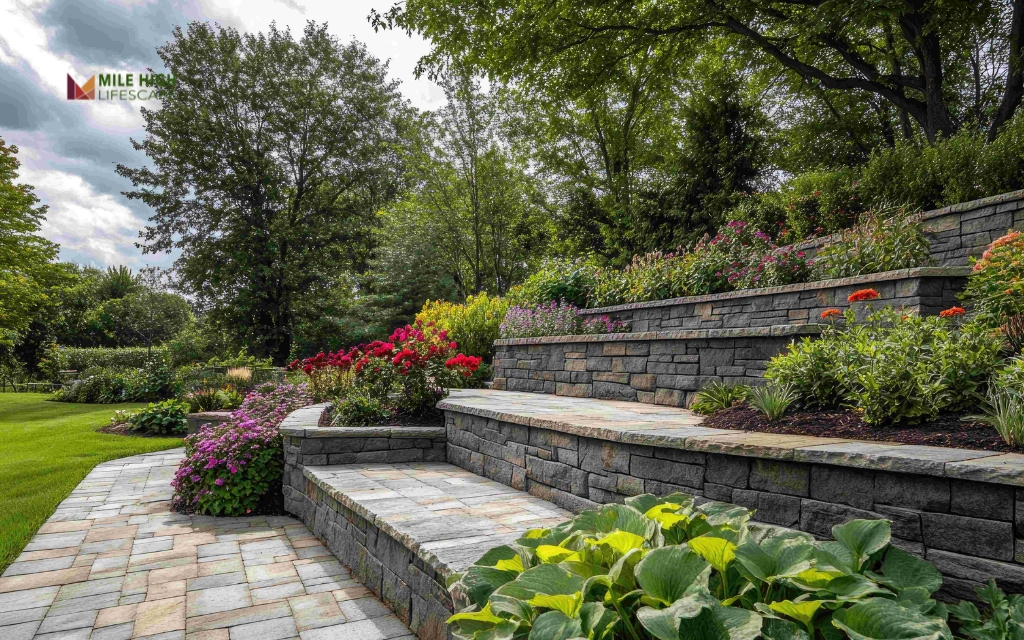
Small Space & Residential-Scale Retaining Wall Ideas
Small Retaining Wall Ideas
Build walls under 24 inches to define garden edges and create level transitions without engineering complexity. These walls typically avoid permit requirements while solving minor drainage issues. Use materials like stacked stone or interlocking blocks that maintain structural integrity without appearing massive. Add flat caps to create casual seating around patios. The manageable scale makes these perfect weekend projects for homeowners with basic DIY skills.
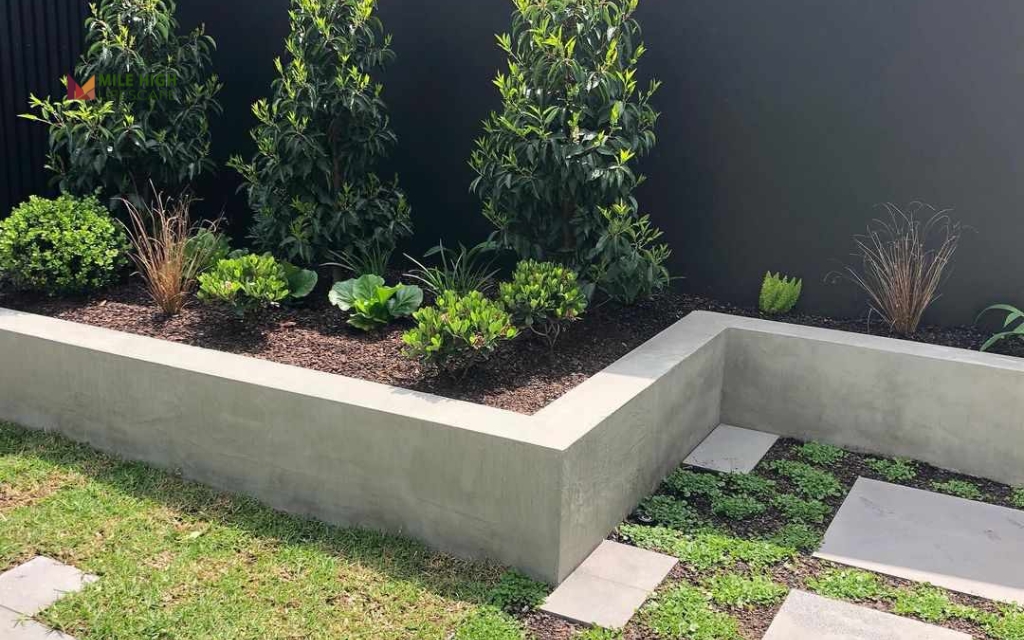
Front Yard Retaining Wall Ideas
Boost curb appeal with front-facing walls that complement your home’s architecture. Include planting pockets for seasonal color and integrated address signage with lighting. Select materials that echo your home’s exterior elements for visual coherence. For colonial homes, use formal walls with clean lines; for craftsman styles, choose natural stone with visible craftsmanship. These structures create strong first impressions while managing problematic slopes.
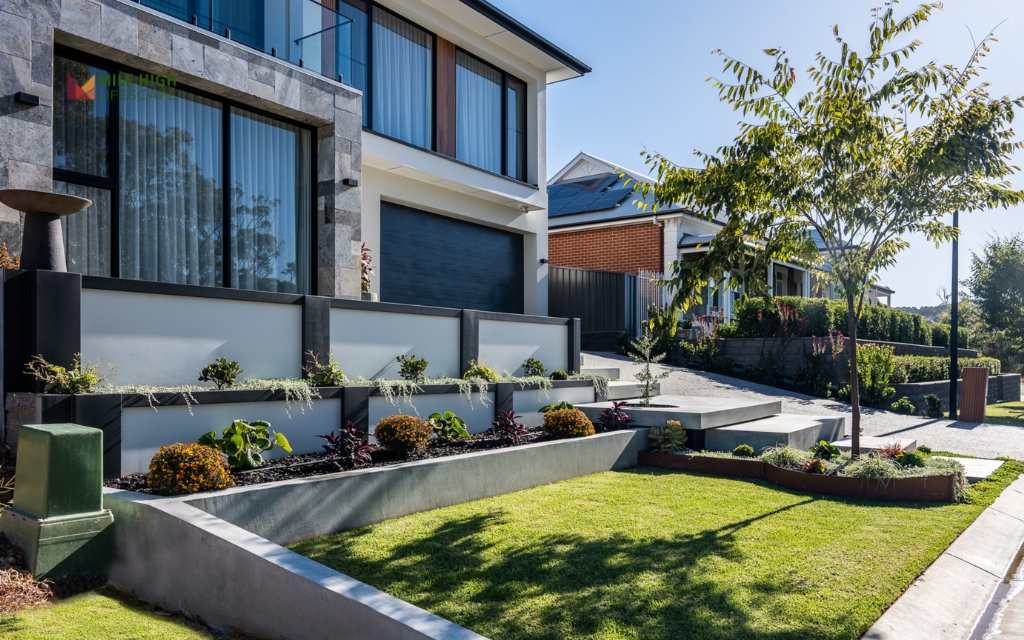
Garden Retaining Wall Ideas
Convert unusable slopes into productive growing spaces with dedicated garden walls. Design curved structures that follow natural contours rather than imposing rigid lines. Add wide caps for seating during maintenance or harvest. Consider material effects on soil chemistry—limestone raises pH for alkaline-loving plants, while cedar naturally deters certain pests. These permanent structures complement established perennial gardens and sophisticated landscape designs.
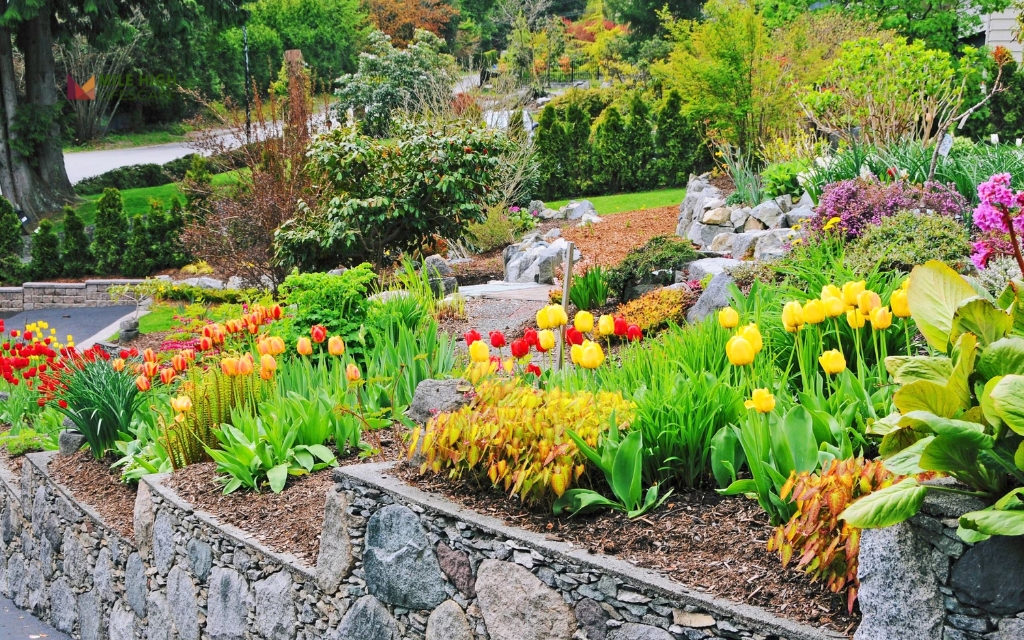
Flower Bed Retaining Wall Ideas
Protect growing spaces with low walls that separate flower beds from lawns and walkways. These borders prevent soil erosion and eliminate edge trimming challenges. Use weathered fieldstone for cottage gardens or clean-lined block for contemporary designs. Heights of 8-12 inches contain mulch while showcasing cascading plants. Include wider sections as display platforms for containers or garden ornaments. These structures organize your landscape while protecting plants from mower damage.
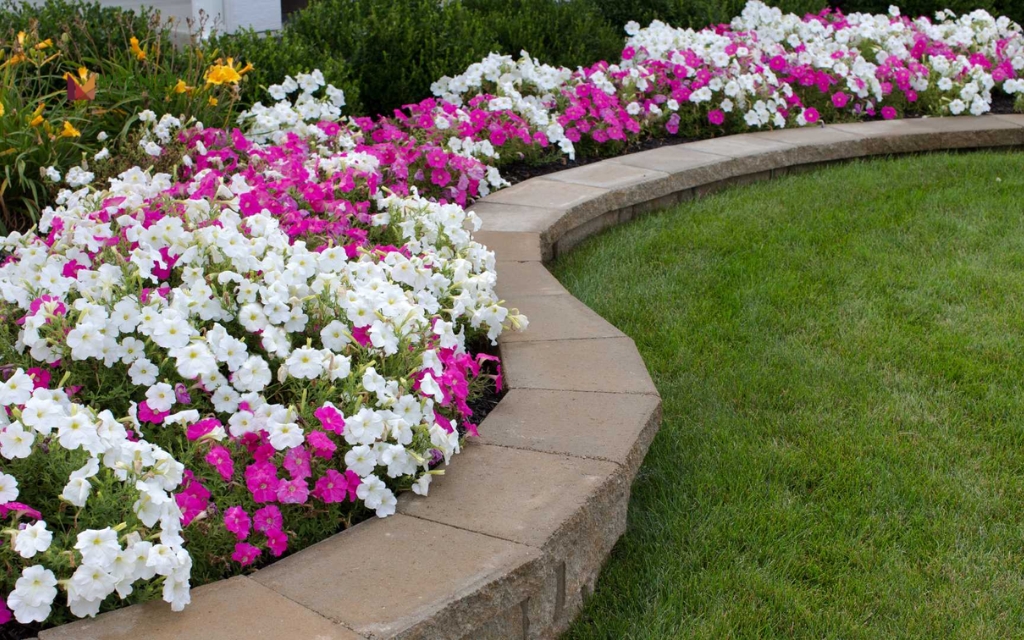
Corner Retaining Wall Ideas
Transform awkward transitions into design features with strategic corner walls. These structures solve elevation changes at property boundaries, driveways, and building foundations. Use curved designs to soften harsh angles or sharp geometric forms for contemporary settings. Add built-in planters and accent lighting to create nighttime focal points. These solutions prevent erosion at vulnerable intersections while converting previously neglected spaces into distinctive landscape elements.
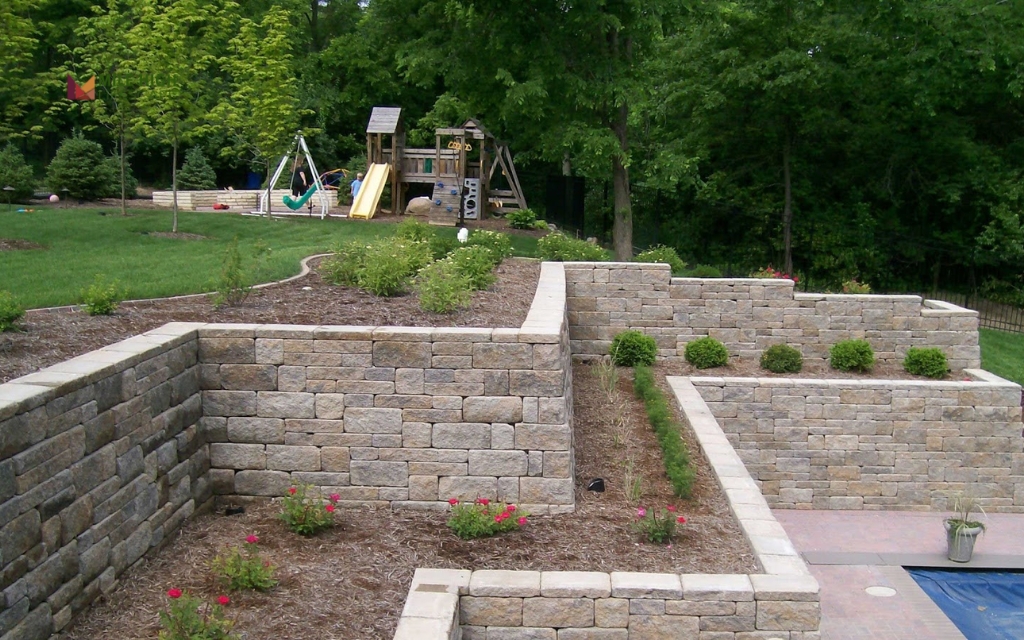
Retaining Wall with Fence Ideas
Maximize space by combining boundary definition with slope management. Position fence posts behind the retaining wall, anchoring them in solid ground rather than loose backfill. Match fence styles to wall materials—horizontal wood slats with stacked stone or metal panels with contemporary concrete. Create seamless transitions using hidden metal channels in wall caps to receive fence posts. This integrated approach eliminates narrow maintenance strips between separate structures while providing both privacy and erosion control.
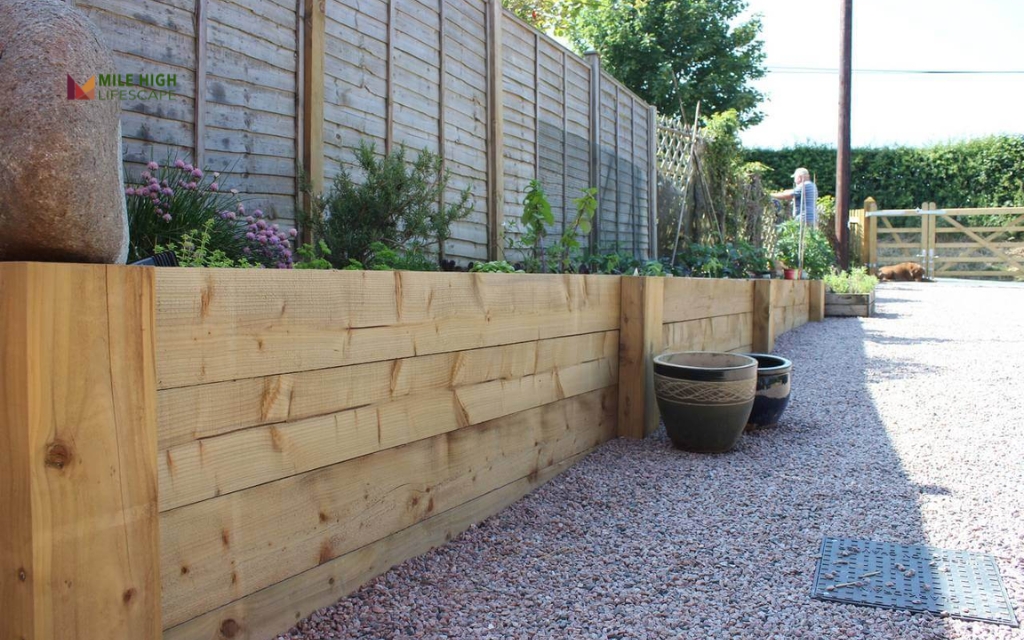
2-Tier Retaining Wall Ideas
Distribute soil pressure using dual walls that create stepped transitions. Space tiers at least twice the height of the lower wall apart to ensure stability and provide maintenance access. Use contrasting materials between levels—stone below transitioning to block or timber above. Utilize the space between walls for pathways, seating, or planting beds with cascading species that visually connect the levels. This approach manages significant elevation changes without imposing monolithic structures.
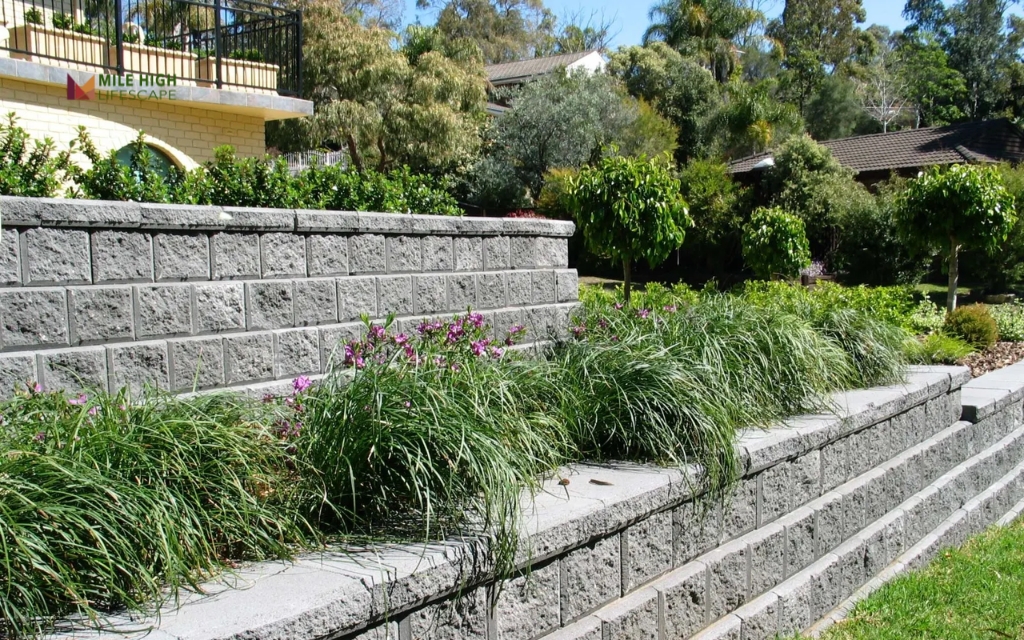
Large-Scale & Functional Retaining Wall Ideas
Retaining Wall Ideas for Sloped Backyard
Convert steep slopes into usable outdoor space with engineered wall systems. Document existing conditions before starting to guide design solutions for specific soil and drainage needs. For walls over four feet, use geogrid reinforcement extending into the hillside to resist soil pressure. Include proper drainage with gravel backfill and perforated pipe to prevent water pressure buildup. These installations require professional engineering in most areas but dramatically increase usable property while solving dangerous erosion problems.
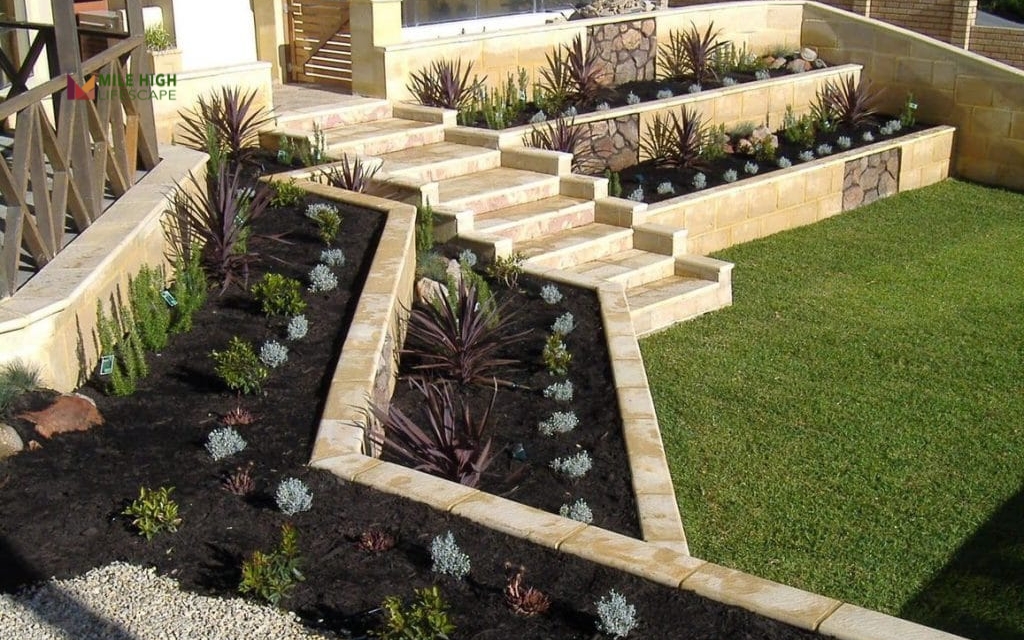
Backyard Retaining Wall Ideas
Create level spaces for outdoor living while managing slopes discreetly. Balance appearance with function to establish platforms for patios, fire pits, and garden rooms. Include built-in elements like benches or outdoor kitchen foundations. Design flexible shapes that work around existing trees and views rather than imposing rigid geometry. Choose materials that complement outdoor furniture with consistent color themes. These walls effectively expand your home’s usable space through thoughtful grade management.
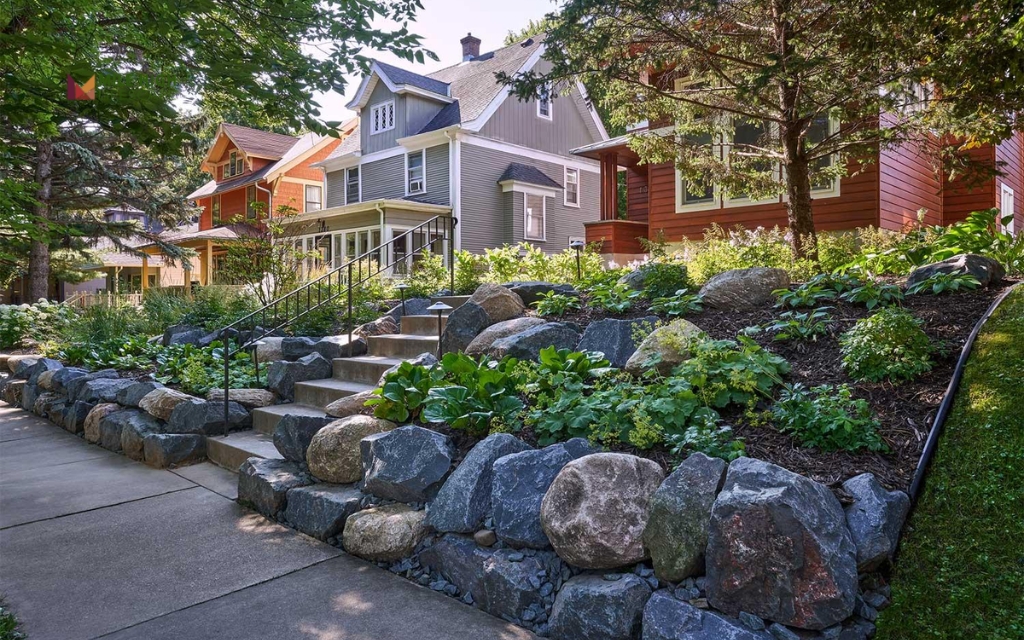
Driveway Retaining Wall Ideas
Reinforce driveway edges while preventing soil migration onto driving surfaces. For steep driveways, use stepped walls parallel to traffic flow to prevent lateral soil movement. Add recessed lighting for nighttime safety without creating driver glare. Select materials that withstand snow removal and salt exposure in cold climates—segmental concrete systems with replaceable units offer excellent durability. These walls solve practical problems while creating strong linear elements that guide visitors through your property.
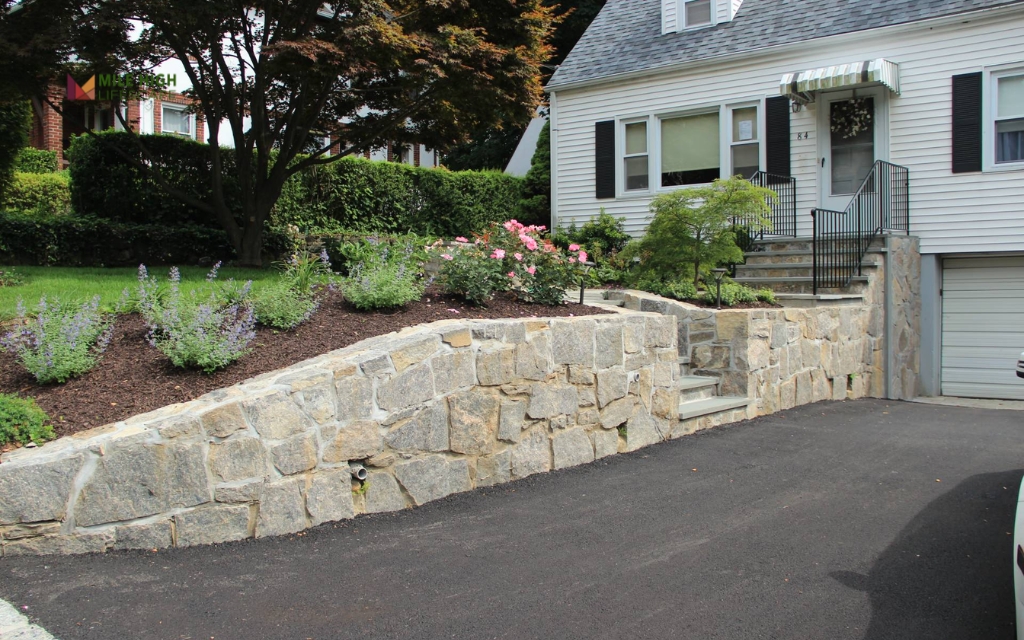
Retaining Wall with Integrated Steps
Incorporate built-in stairs into retaining walls for seamless connections between landscape levels. Use consistent materials for vertical and horizontal surfaces—natural stone steps from matching walls or poured concrete steps with concrete walls. Keep riser heights between 6-7 inches with treads at least 12 inches deep for comfortable use. Add landings at regular intervals on longer staircases, positioned to highlight views or garden features. These systems create intuitive circulation patterns through complex landscapes.
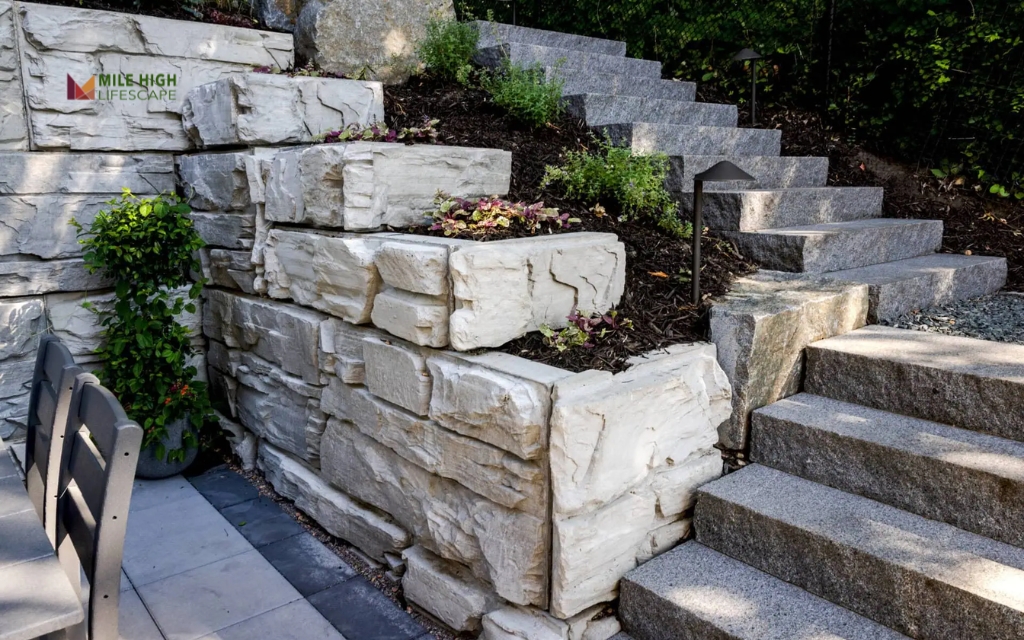
Pool Retaining Wall Ideas
Create level pool decks on sloped sites with specialized retaining walls that handle high moisture and chemical exposure. For dramatic effect, design infinity edges where walls and water features merge visually. Incorporate waterfalls that mask pump sounds while adding visual and auditory interest. Use materials like granite, bluestone, or specialized concrete that withstand pool conditions. Include concealed channels for equipment plumbing and lighting wires to maintain clean architectural lines.
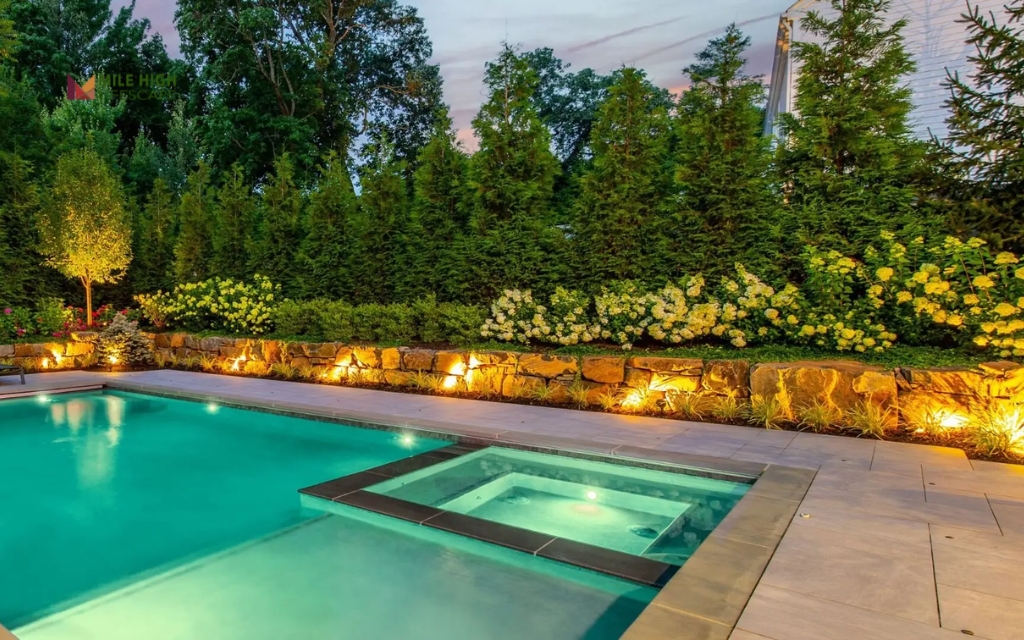
Retaining Wall with Drainage Solutions
Prevent wall failure with comprehensive drainage systems that manage water effectively. Address hydrostatic pressure—the primary cause of failure—with gravel drainage columns connecting to perforated pipe that diverts water away from the wall base. For taller walls, add weep holes or drainage outlets for visible confirmation of system function. Consider French drains running parallel to the wall to capture surface and subsurface water. These systems prevent bulging, cracking, and catastrophic failures through systematic water management.
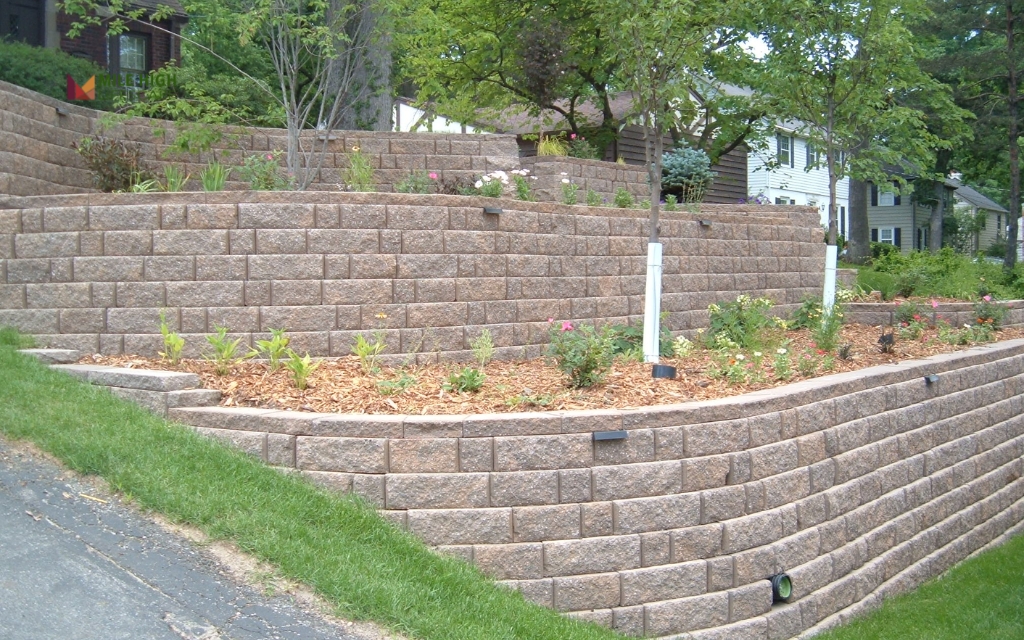
Slope-Supporting Block Wall Ideas
Use engineered segmental retaining wall systems for substantial grade changes. These specialized concrete units feature connection systems, precise setbacks, and compatibility with reinforcement for taller walls. Their modular nature allows complex configurations while maintaining structural integrity. Select systems with textured faces that mimic natural stone while providing verified strength. For walls over six feet, create stepped designs with planted terraces between sections to reduce apparent height while maintaining performance.
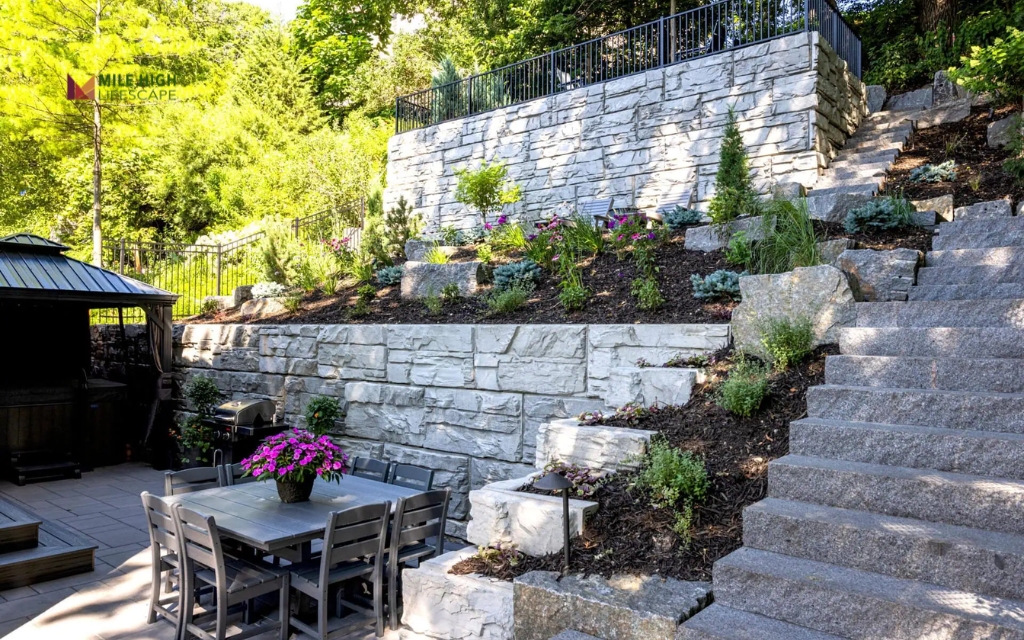
Contemporary & Design-Forward Retaining Wall Ideas
Modern Concrete Retaining Wall Ideas
Create clean-lined concrete walls that celebrate the material’s inherent properties. Use board-formed techniques to transfer wood grain textures to surfaces or explore exposed aggregate finishes that reveal decorative stone within the mix. Sharp corners and precise edges enhance geometric purity. Add integrated lighting to emphasize planar surfaces after dark. Echo concrete finishes from your home’s architecture to create material dialogue between structure and landscape.
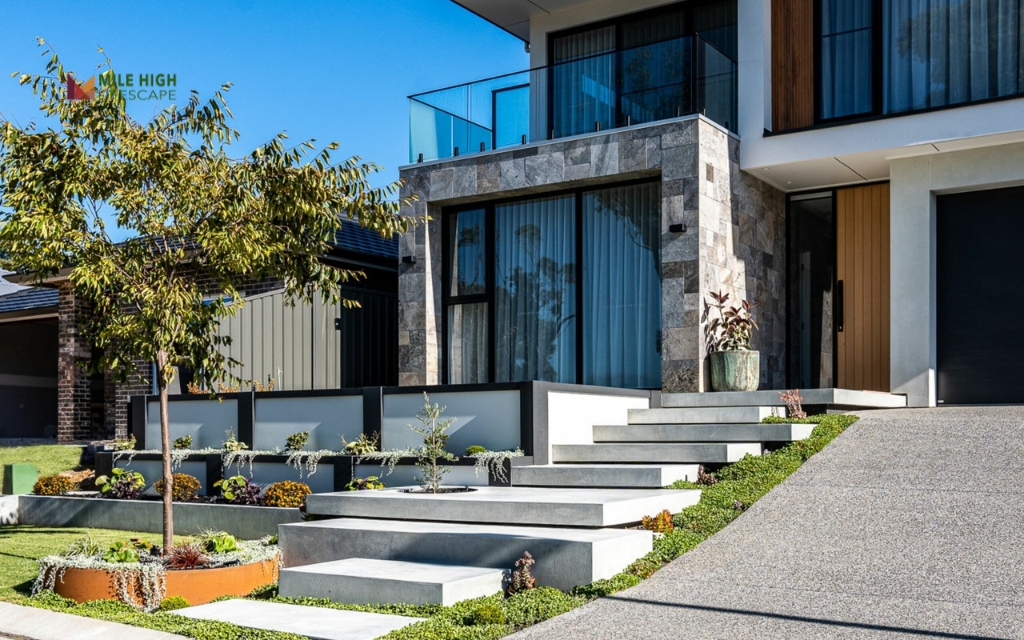
Painted Retaining Wall Ideas (Black Wall)
Install dramatic black-painted walls as strong visual backdrops for plantings. These bold elements make adjacent vegetation appear more vibrant—chartreuse foliage and white flowers particularly pop against dark backgrounds. Choose matte finishes to reduce glare. For masonry walls, use specialized exterior paint; for concrete, incorporate integral pigment throughout the material for longevity. These installations excel in contemporary settings where visual impact takes precedence over blending with surroundings.
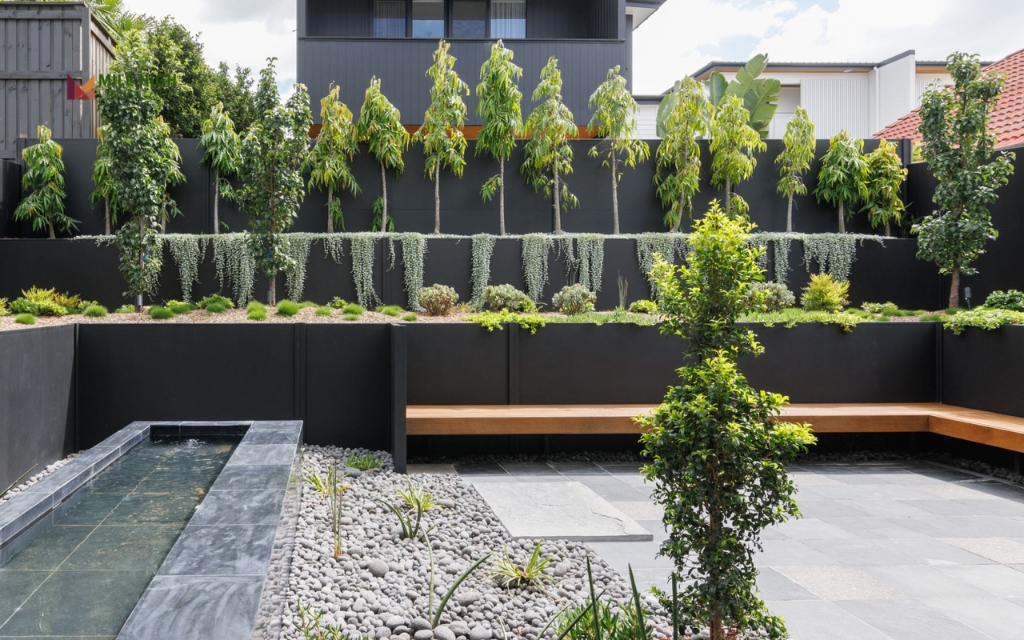
Curved Retaining Wall Ideas
Create fluid, curved walls that introduce movement and organic flow to outdoor environments. Use cast-in-place concrete with curved formwork for maximum design flexibility or specialized retaining blocks with tapered sides for modular construction. Gentle S-curves reduce the perceived mass of longer walls while creating visual rhythm. Position curves to embrace garden spaces, creating protected microclimates for sensitive plantings. These biomorphic forms complement natural elements while performing essential structural functions.
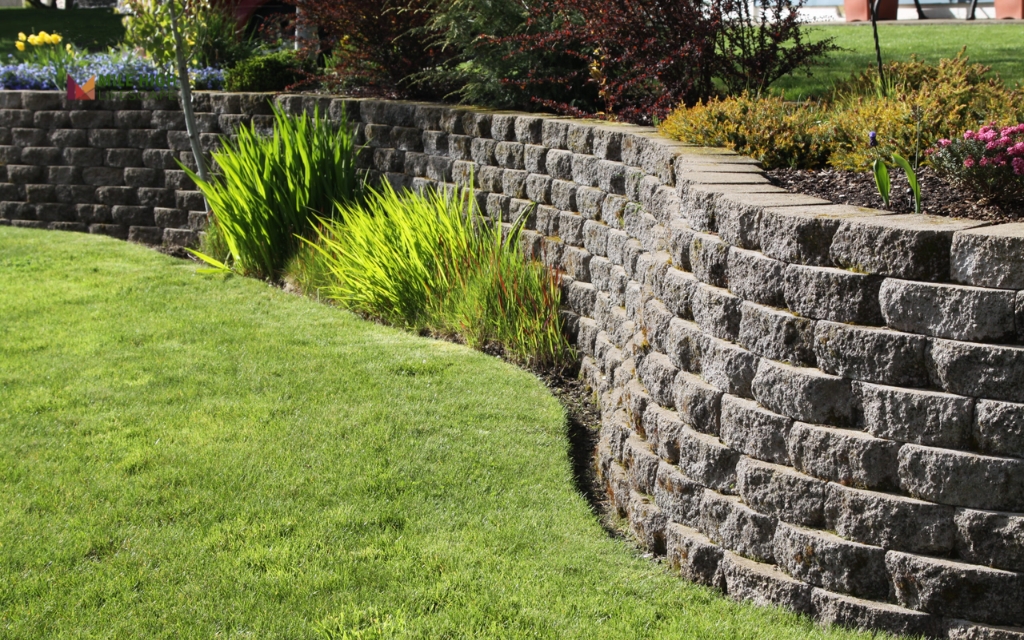
Geometric Patterned Walls
Incorporate deliberate patterns to transform retaining walls into design features. Use alternating colored blocks to create checkerboard or stripe effects that reduce perceived mass. For poured concrete, utilize formliners to imprint geometric textures directly into the surface. Consider patterns that change along the wall length, transitioning from dense texture at eye level to smoother surfaces above and below. These installations elevate utilitarian structures into design statements that complement modern architecture.
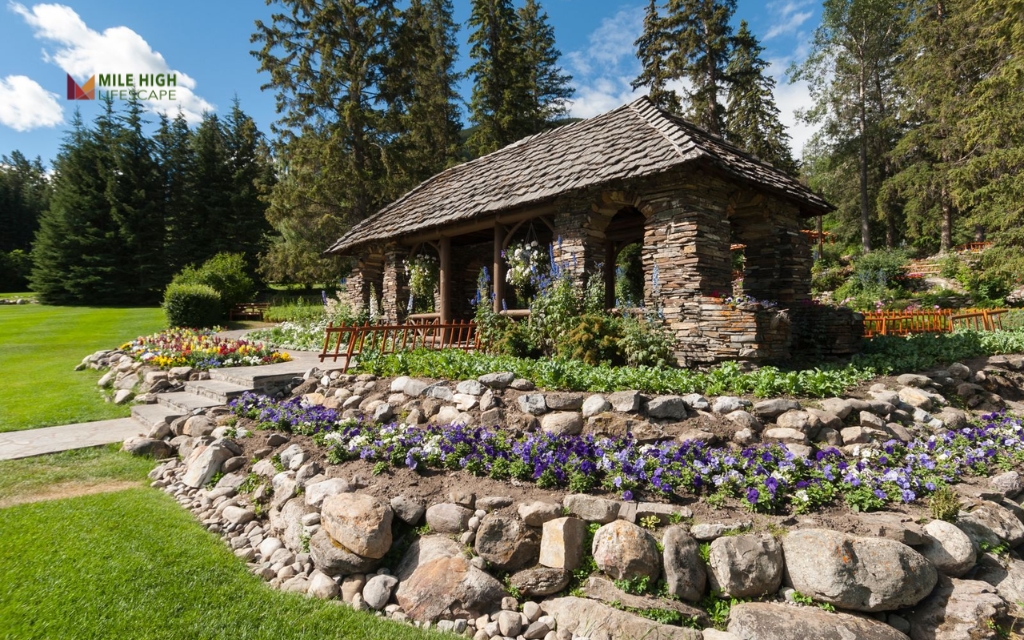
LED-Lit Retaining Wall Ideas
Transform walls into nighttime features with integrated lighting systems. Use recessed fixtures to wash light down textured faces or cap-mounted lights for safe pathway illumination. Install linear LED strips in reveals or along the base to create floating effects after dark. Choose weather-resistant components—sealed fixtures, marine-grade wiring, and proper drainage—to ensure longevity despite exposure. These installations extend outdoor usability hours while highlighting landscape investments that would otherwise disappear after sunset.
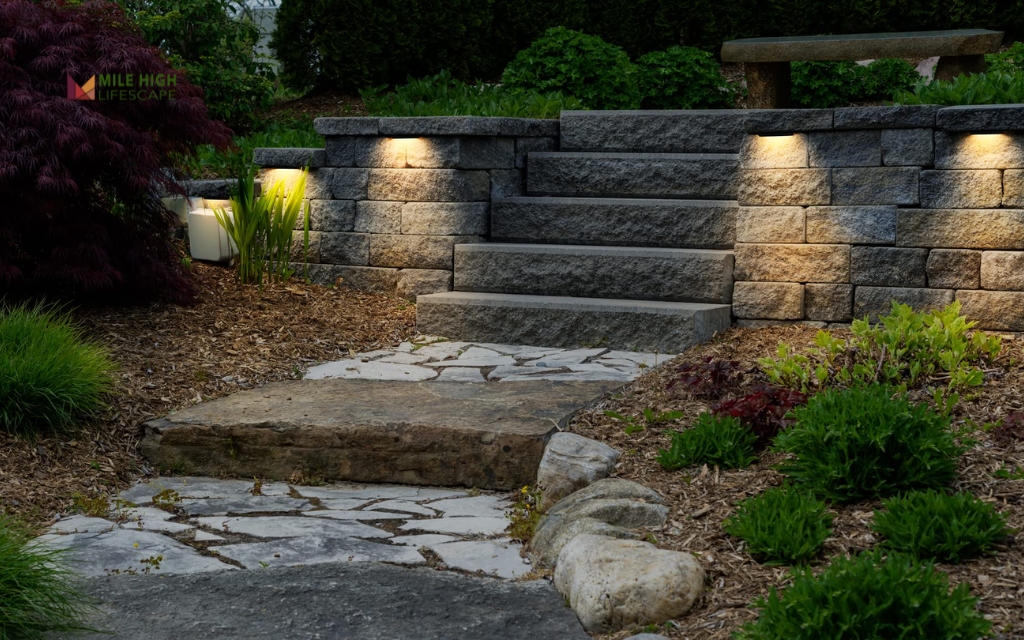
Retaining Wall with Built-In Seating
Create dual-purpose walls with integrated seating that eliminates the need for separate furniture. Build walls 18-24 inches high with minimum 16-inch caps for comfortable adult seating. Select materials that withstand prolonged contact—smooth concrete, thermally treated stone that resists heat absorption, or splinter-free hardwood caps. Add subtle drainage slopes to prevent water pooling. Design seating with slight backward leans for enhanced comfort. These multifunctional elements establish logical gathering areas without consuming additional space.
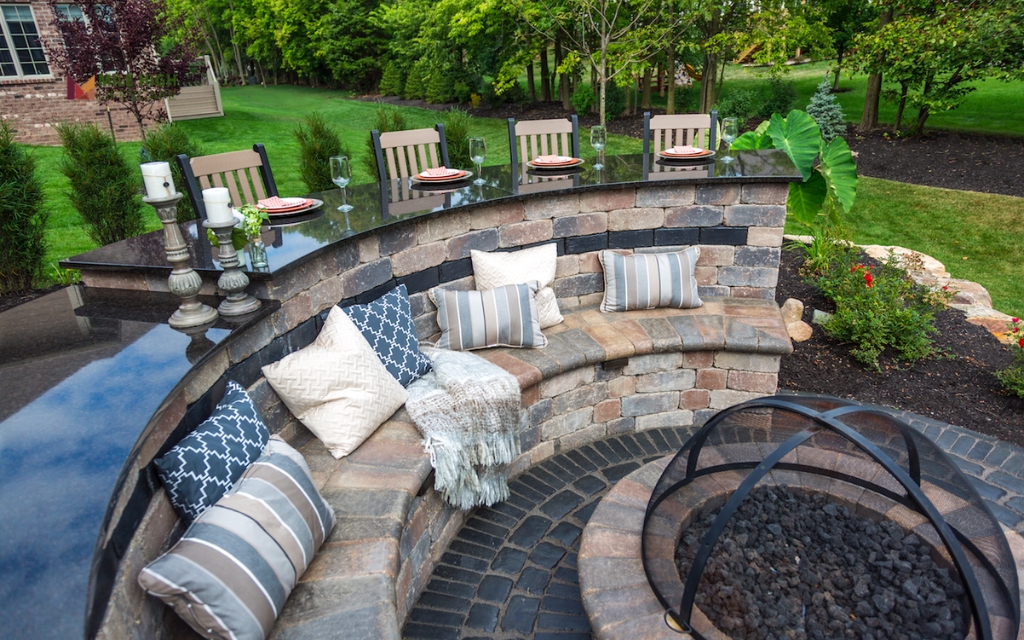
Retaining Wall with Built-In Planters
Incorporate dedicated planting pockets directly into retaining walls at multiple heights to soften hardscape elements. For contemporary designs, use rectilinear openings with clean edges; for naturalistic approaches, create irregular stone arrangements with planting crevices. Select drought-tolerant plants like sedums or ornamental grasses that thrive in the hot, dry microclimates these walls create. Install concealed irrigation during construction to ensure plant health. These living walls evolve continuously as vegetation matures, combining necessary structure with dynamic horticultural interest.
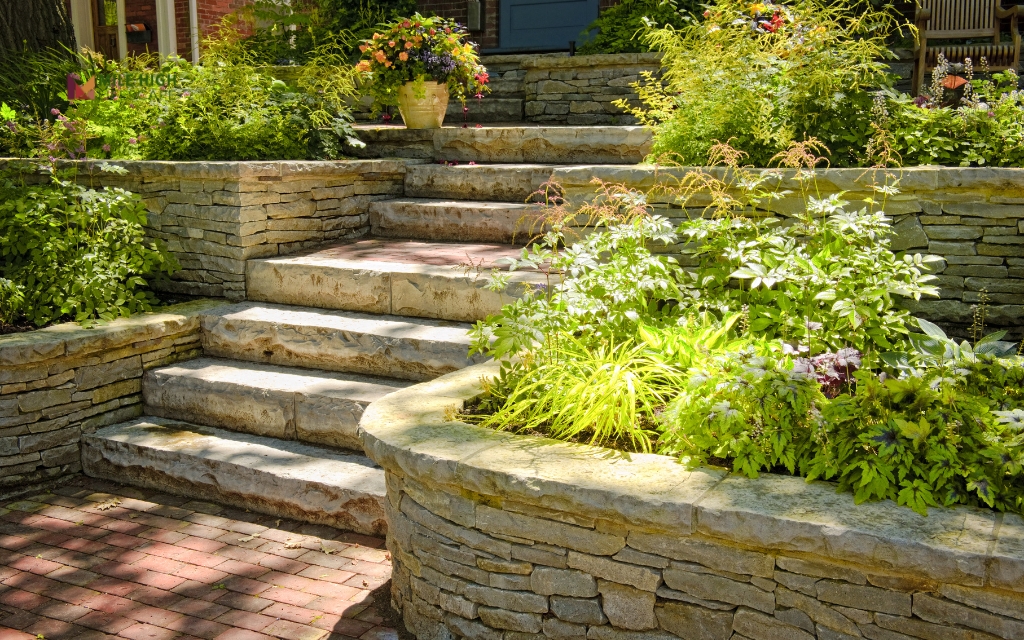
Mosaic Retaining Wall Designs
Add decorative tile, glass, or stone inlays to transform walls into permanent landscape art. Apply these elements to portions of structurally sound walls built from concrete or block. Use abstract patterns with weather-resistant materials for timeless appeal or representational scenes depicting local wildlife for strong sense of place. These unique installations require significant handcraft but create distinctive landscape features impossible to replicate through mass-produced materials.
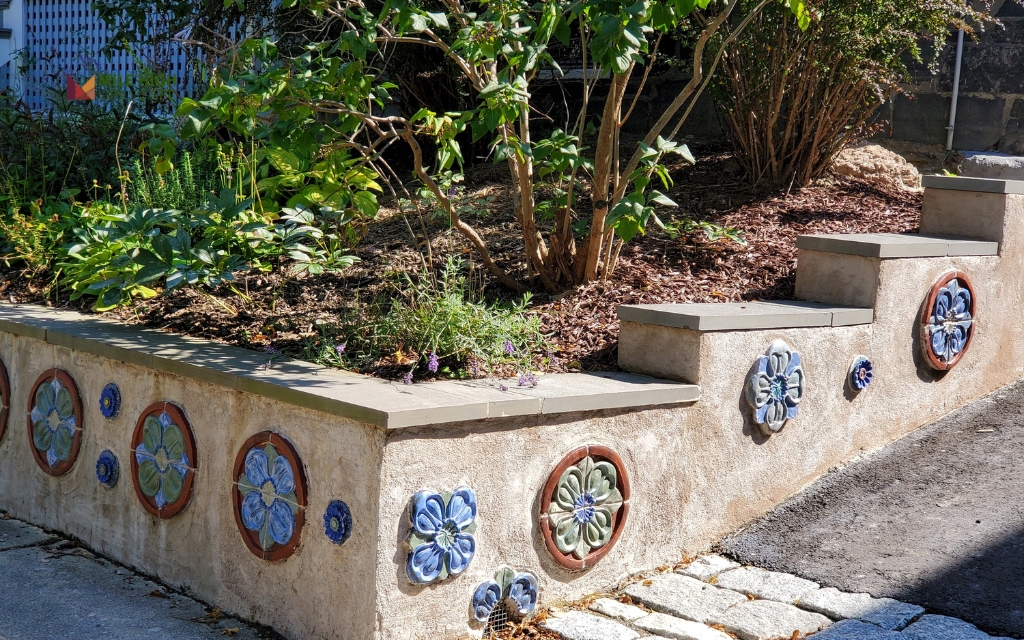
Brick Retaining Wall Ideas
Build walls with traditional brick to achieve timeless appeal and exceptional durability. Explore pattern variations—stack bond for contemporary settings, running bond for traditional landscapes, or soldier courses as accents along caps. Consider specialized brick types like clinkers (irregularly shaped, over-fired units) for distinctive character. For walls over three feet, add steel reinforcement and concrete backing. These installations age gracefully, developing character through subtle weathering that enhances rather than degrades appearance.
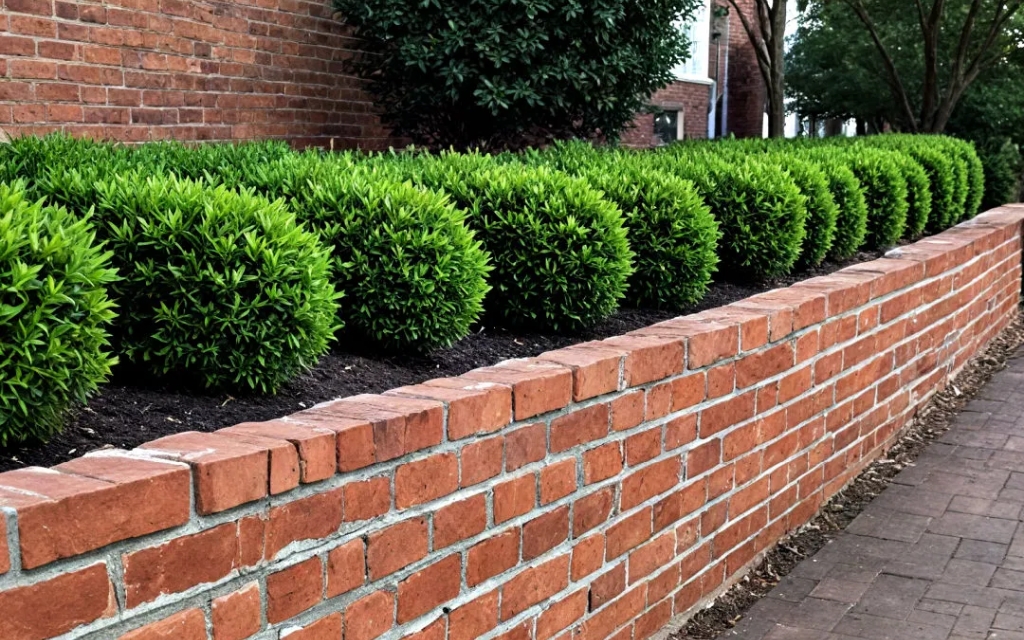
Metal Retaining Wall Ideas
Use metal walls for contemporary appeal and exceptional longevity. Weathering steel (Corten) develops a self-protecting rusty patina requiring zero maintenance while providing warm coloration that complements landscapes. Consider plate steel with precision-cut patterns that cast evolving shadows. Aluminum panels with powder-coated finishes offer lightweight, corrosion-resistant alternatives. These thin walls maximize usable space on constrained sites while providing distinctive elements that reference either industrial heritage or contemporary minimalism.
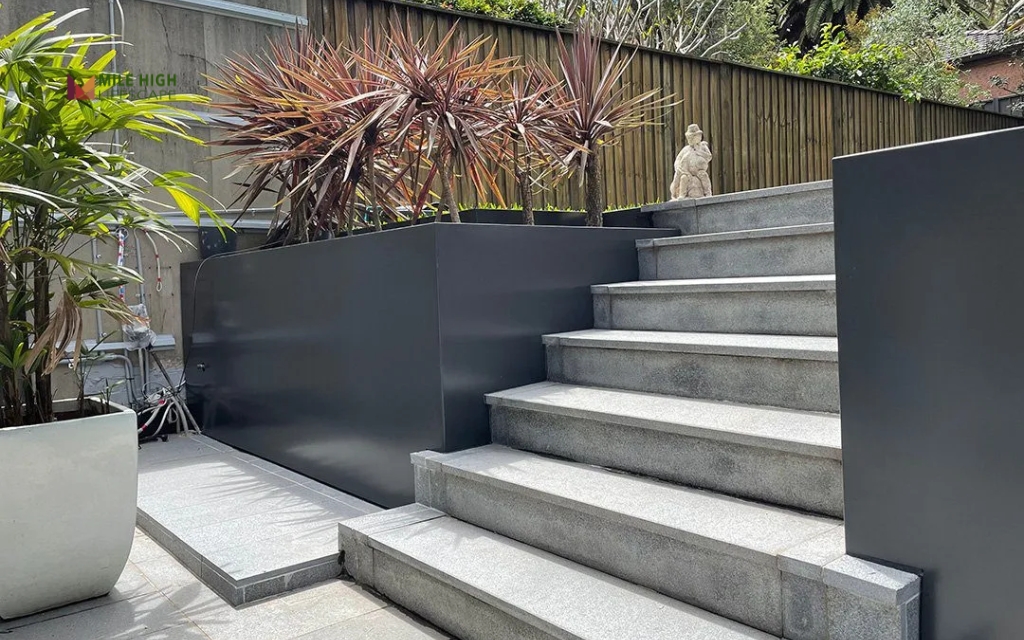
Living Green Retaining Walls
Design walls that support extensive vegetation directly on vertical faces. Incorporate soil pockets throughout the structure using modular commercial systems with integrated irrigation or DIY approaches with secured containers. Select plants that tolerate vertical conditions—sedums, small ferns, and alpine perennials. Beyond aesthetics, this vegetation reduces surface temperature, absorbs rainfall, and creates habitat for beneficial insects. These multifunctional installations excel in urban environments where biological functions complement structural roles.
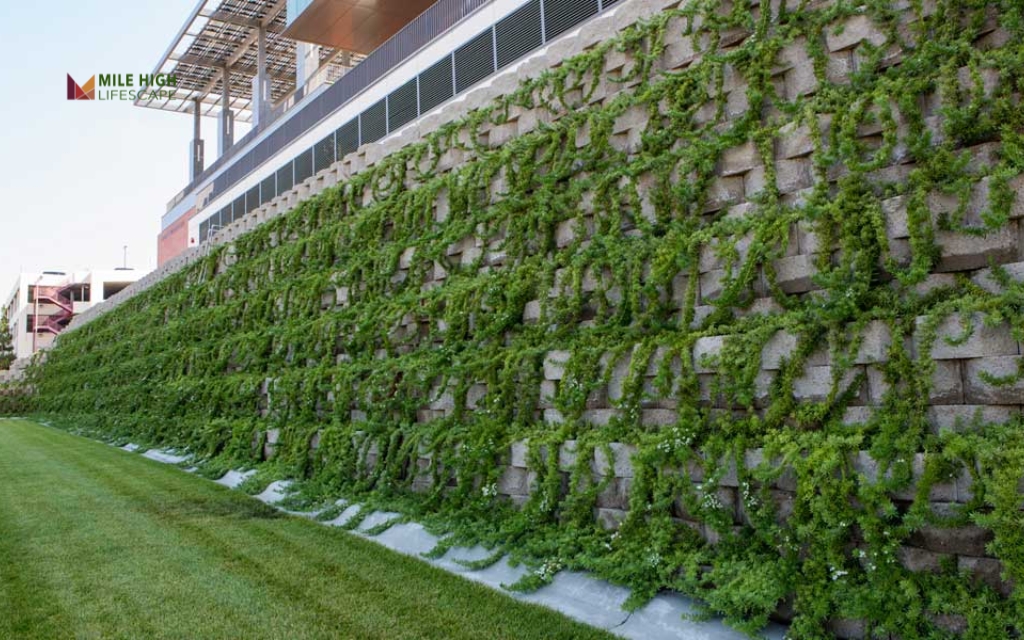
Stamped Concrete Retaining Walls
Replicate expensive materials at a fraction of their cost using stamped concrete. This technique impresses patterns into fresh concrete before curing, creating textures that mimic stone, brick, or timber. Add integral color pigments for long-lasting hues that won’t fade or chip. For natural appearance, apply multiple color release agents to avoid artificial uniformity. These monolithic structures provide excellent integrity for walls up to six feet, often eliminating complex reinforcement systems needed by segmental walls.
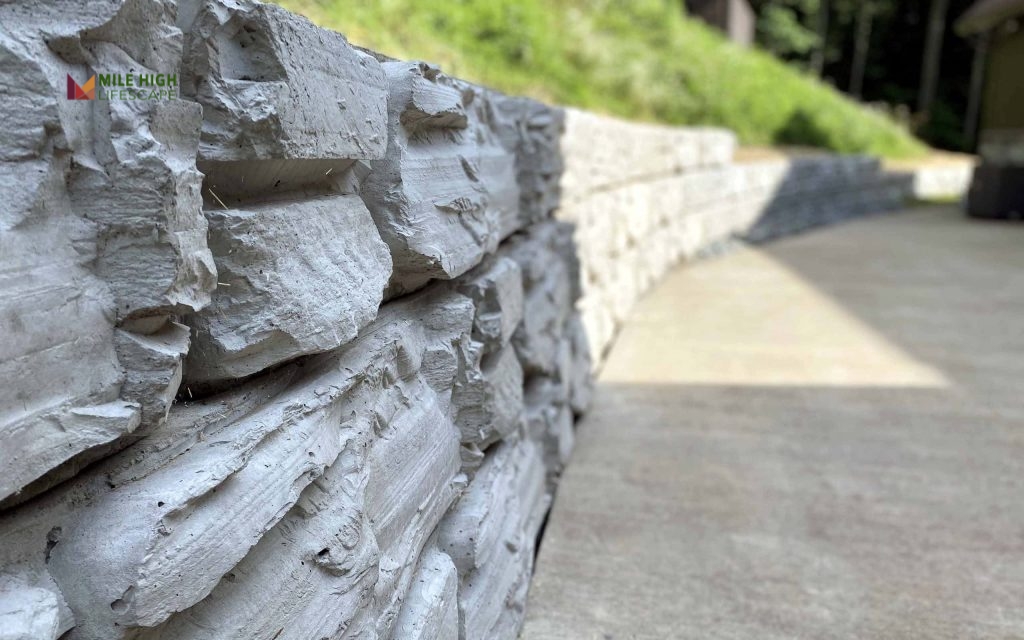
Terraced Vegetable Wall Gardens
Transform slopes into productive growing spaces with terraced walls designed for edible landscaping. Use food-safe materials—natural stone, untreated cedar, or food-grade concrete—to minimize chemical leaching. Install irrigation systems during construction with dedicated lines for each level. Make paths between terraces at least 24 inches wide for comfortable harvesting access. Position south-facing in northern climates to maximize sun exposure. These installations convert problem slopes into valuable food-producing assets that combine function with beauty.
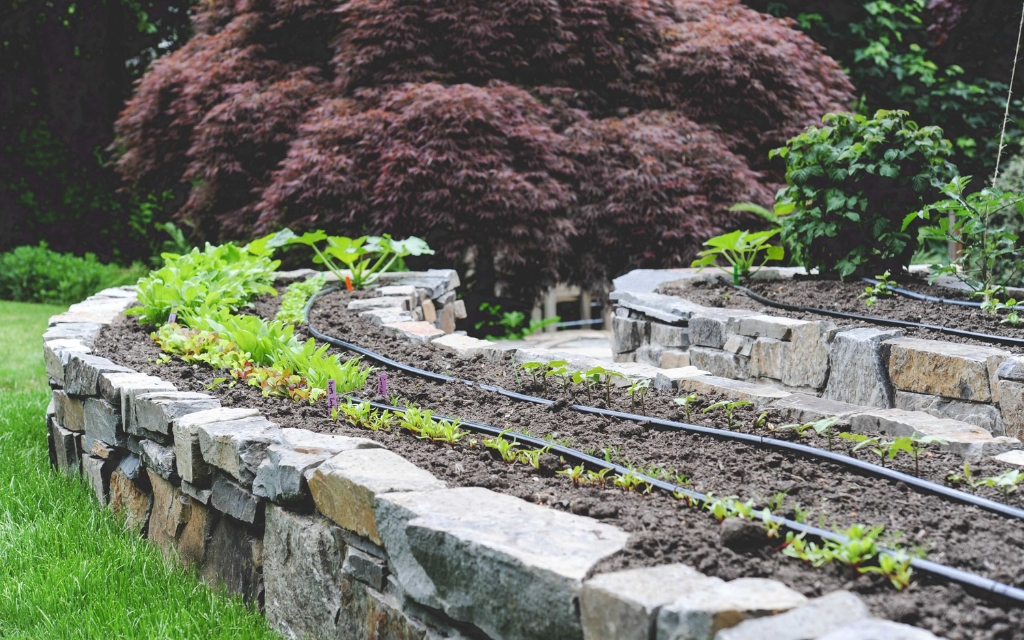
Retaining Wall Water Features
Incorporate water elements directly into wall designs to create multisensory experiences. Design sheet falls where water flows evenly across textured surfaces or naturalistic arrangements where water follows irregular paths through stone. Add wall-mounted scuppers at regular intervals to create focal points. Use recirculating systems with concealed pumps for water efficiency. These features mask urban noise, attract wildlife, and create cooling microclimates near gathering areas while transforming necessary grade changes into landscape amenities.

Conclusion
Retaining walls represent the perfect marriage of landscape necessity and design opportunity. From budget-friendly solutions to architectural statements, these structures transform challenging terrain into usable, beautiful outdoor spaces. When planning your retaining wall project, carefully consider your specific site conditions, local building regulations, and long-term maintenance requirements alongside aesthetic preferences.
At Mile High Lifescape, we transform challenging slopes into beautiful, functional outdoor spaces across the Denver metro area. Our expert team delivers retaining wall solutions that balance engineering requirements with your aesthetic vision and budget. Contact us today at (303) 877-9091 for a free consultation to discuss how we can elevate your landscape with the perfect retaining wall for your property.
Frequently Asked Questions (FAQs)
What type of retaining wall is cheapest to build?
Gravity walls using concrete blocks are the most affordable. For under 3 feet, standard blocks cost around $15–25 per sq. ft. Treated wood or repurposed materials can be cheaper but suit informal use. Always include drainage.
What is the best material for long-lasting retaining walls?
Natural stone and reinforced concrete last over 100 years. Segmental block walls with proper reinforcement can also be durable, often backed by 25+ year warranties. Choose materials suited to your climate.
Can I build a retaining wall without a permit?
Often, walls under 3–4 feet don’t need permits, but local rules vary. Walls near structures, property lines, or utilities usually require permits. Always check with your local building office first.
Which retaining wall is best for my sloped backyard?
It depends on slope, soil, and use. Steep slopes may need geogrid-reinforced walls; gentler ones can use gravity systems. Match materials to your landscape style and consult an engineer for taller walls.
How do I maintain a retaining wall over time?
Inspect seasonally for leaning, blocked drains, or damaged materials. Clear outlets, fix damage quickly, and manage vegetation. Treat wood, clean concrete, and reset stones as needed to extend wall life.
